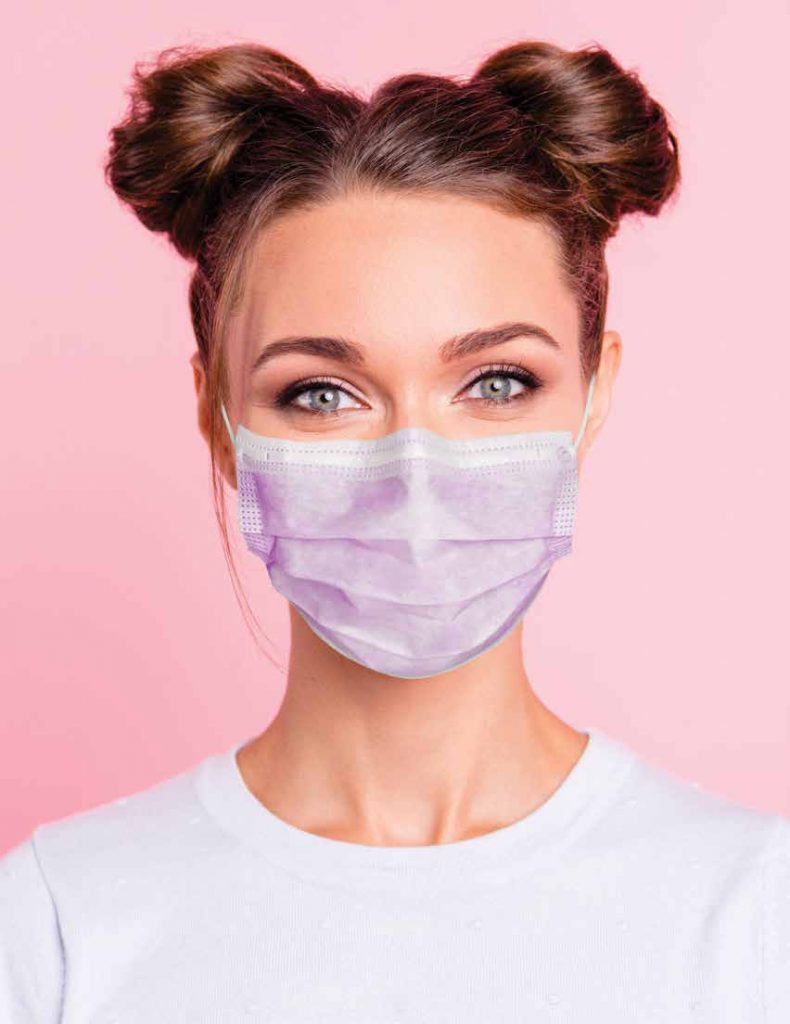Maskne
and Other Skin Conditions Caused by Wearing a Mask

Whether you feel masks are necessary, totally frustrating, or both, it is likely that you are noticing some skin changes. Theskin on your face is not designed to be steamed all day long by your bacteria-laden breath. Yes, believe it or not, the highest number of bacteria in your body are concentrated in your mouth. Wearing a face covering is something that causes a variable amount of stress for people. Accumulated moisture, oils, stress, and bacteria all combine to cause maskne, or mask acne, and other common skin rashes. Here are a few tips to help you cope with the changes. Facial rashes are caused by a myriad of conditions so be sure to see your dermatologist for problems that persist.
Maskne
Whether or not you are acne prone, masks predispose you to pimples and ingrown hairs. Masks trap acne-causing bacteria and skin oils (sebum) on the skin. Bacteria thrives in the warm, moist environment that the mask creates. Not only that, but mask friction is known to trigger ingrown hairs, especially for those who shave. Friction-related acne is commonly seen in athletes and is known in dermatology as acne mechanica.
I recommend wearing cotton masks washed in a gentle cleanser and switched out daily or even twice daily if you tend to perspire. After washing and rinsing thoroughly, it is ideal to dry masks outdoor in the sun. Avoid using fabric softeners and dryer sheets. Anti-acne cleansers containing glycolic acids or salicylic acids are helpful—but be careful not to overdo these products since the mask friction can cause raw areas in sensitive individuals. At Bella Skin Institute, we recommend the pimple cream—Miracle Cream—that reduces bacteria and redness without irritating the skin. Be sure to cleanse your face twice daily and, if acne prone, use gentle cleansing wipes a few times a day in between. If it is possible to skip wearing makeup on the covered areas, that is helpful. Immediately after shaving, use a glycolic-based toner to help prevent ingrown hairs. On weekends, when mask-wearing is at a minimum, salicylic acid peel pads are a great idea to decongest and exfoliate the skin until aestheticians can resume performing facials. Continue nightly application of a light, non-comedogenic moisturizer.
Rosacea
Rosacea flares are similar to acne flares (see above). Stay consistent with your anti-rosacea skincare regimen. Miracle Cream is also helpful to reduce redness without causing scabbing and peeling. Besides that, take deep breaths when your mask is off and try turning off the news. The triggers for rosacea are stress, alcohol, coffee, sun exposure, and spicy foods. So, basically, don’t have any fun or eat anything tasty. Just kidding! Actually, each person has different triggers, so you only need to manage the ones that are triggering you.
Allergic Contact Dermatitis
Some mask-wearers are complaining of itchy rashes on the face and puffiness around the eyes. This happens most commonly with the medical-grade, disposable paper masks. There is a strip of glue that keeps a twist-tie-like metallic strip in place. This allows for adjusting the fit on your nasal bridge. Some are allergic to this adhesive strip. Some notice their eyes water. Some are irritated mostly when they wear a mask after it has been sitting in a hot car. Not everyone is allergic—it is a small subset. However, if you are experiencing itchy rashes or puffy eyes, try switching to a cotton mask washed with Dove gentle-foaming cleanser. If the rash persists, see your dermatologist.
Seborrheic Dermatitis(facial dandruff)
Seborrhea is dandruff of the face. It is not contagious. It is genetic and characterized by waxy, flaky, itchy skin between the brows and in the nasolabial folds (creases that extend down from the sides of the nose). We have seen an increase in patients complaining about flare ups or, in some cases, having their very first flare. Regular facial cleansing and trimming facial hair shorter can help. This condition can be controlled with topical creams that a dermatologist prescribes.
Ear-itation (chafing)
Raw areas behind the ears are a common complaint. Try clipping the mask’s ear loops to each other behind your head or switching to a better-fitting mask with adjustable loops, or taking one month off work (kidding!). It is worth your time to find a mask that is comfortable so that you don’t suffer this side effect. For skin sores, duoderm tapes or medical paper tape can be helpful.
Melasma
Melasma is a frustrating hormonal pigmentation that is triggered by sun exposure and heat. One would think a face covering would improve this condition since it covers the face. Ironically, we have been seeing worsening of melasma. This could be caused by chronically increased temperature under the mask. Another theory is that the friction of the mask is essentially wiping away sunscreen, leaving people more susceptible to UV once they get home. There has been an uptick in backyard tanning, for lack of a better
thing to do, so this could be the culprit. It is best to apply sunscreen and reapply after mask removal and to stay as cool as possible in this summer heat. Peels and a great skincare regimen are also beneficial.
Maskne and other skin conditions are annoying but there are things we can do to manage them. Hopefully the tips above will be helpful, and if not, your local dermatologist is a phone call away. Staying healthy during these unprecedented times is the most important thing. Be safe, babies!

By Anna D Guanche MD FAAD
Board-Certified Dermatologist
The statements in this article are for general informational purposes only and do not substitute for individual medical advice.



